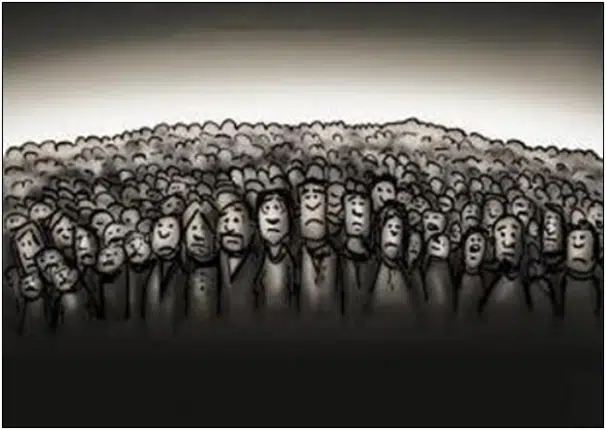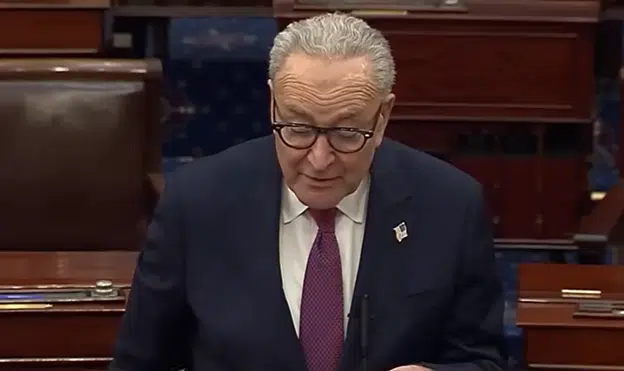
President Donald Trump in a post on Truth Social on April 28 blasted a recent New York Times poll take April 21 to April 24 that showed a negative approval rate, with 42 percent approving and 55 percent disapproving, noting that it had undersampled Americans who had voted in the last election.
The President has got a point, when you just look at 2024 voters in the poll, Trump’s approval rises to 48 percent and his disapproval falls 52 percent. So the Times poll is much closer when focused on likely voters, exactly as Trump suggests.
And on key issues like immigration, Trump’s approval rises to 51 percent while his disapproval falls to 49 percent, effectively flipping the poll’s result that had shown 47 percent approving and 51 percent disapproving.
Overall, Trump’s approval stands at 45 percent, with 52 percent disapproving, according to the latest average of polls by RealClearPolling. The average has been underwater since March, including 12 out of the last 14 polls, but he has continued to receive largely positive marks for fighting illegal immigration, with clear majorities supporting deportation. Even the Times poll showed 54 percent supporting deportation of illegal immigrants.
For presidents in their second terms this century, this brief honeymoon for Trump is normal.
By May 2005, George W. Bush was underwater on his approval rating, never to return, and by June 2013, so was Barack Obama (although he recovered in 2016). Both presidents had just been reelected relatively easily, but both fell from public favor rather quickly once back into office.
At the times, both Bush and Obama were having trouble variously with policies in the Middle East, with the U.S. deep into the Iraq war in 2005 whereas in 2013, Obama’s 2011 withdrawal from Iraq and the region had allowed Islamic State to rise in Syria and then Iraq. Then Bush left office as the economy was crashing, while Obama left while it was relatively strong.
For Trump, at the moment, there are indeed two major wars in Ukraine and Gaza, and a relatively weak economy, both of which he inherited from his unpopular predecessor, former President Joe Biden. There are also the ongoing trade tensions with China and other trade partners as the President attempts to implement his reciprocal trade agenda.
For Biden’s part, he was underwater in approval by August 2021, just eight months into his first term, never to return, as inflation rose and as he had a foreign policy disaster with his military withdrawal from Afghanistan, which saw the Taliban immediately take control of the country.
In contrast, Ronald Reagan and Bill Clinton maintained positive approval throughout their entire second terms. Neither had major wars and both had very strong economies.
It could go to show the impact that the Sept. 11, 2001 terrorist attacks, a decade of wars, the financial crisis and Great Recession of 2008 and 2009, the 2020 Covid pandemic lockdowns and the inflation of 2021 and 2022 have all had on public confidence.
It has been a century of crisis and emergency so far. Voters are rattled.
And it can directly impact the fortunes of the White House incumbent party. Both Bush and Obama’s parties fared very poorly in the 2006 and 2014 Congressional midterms — Bush lost the House and Senate, and Obama lost the Senate as Republicans secured their largest House majority since the 1920s.
Even with good economic times, Reagan lost the U.S. Senate in 1986 and Clinton, although he picked up a few seats in the House in 1998, Republicans kept it, and did not make up any ground in the Senate, which Republicans held easily with at 10-seat majority.
The fact is, second term presidents, even popular ones, have limited political capital — and so do their Congressional parties. There’s a shelf-life.
This certainly is no controversial proposition. In midterm elections dating back to 1906 through 2022, the party that occupied the White House lost seats in the House 27 out of 30 times, or 90 percent of the time, and in years with losses those averaged 34 seats. It was only overcome in 1934, 1998 and 2002, with the Great Depression, Monica Lewinsky and the Sept. 11, 2001 terrorist attacks acting as exigent events. Another edge case is 1962, wherein Democrats only lost three seats, and came within weeks of the Cuban Missile Crisis being resolved.
Meaning, Republicans in the House and Senate appear to have a limited window of opportunity to enact their political agenda, much of which will be riding on the adoption of the budget reconciliation bill with a mix of tax cuts — Trump campaigned on no tax on tips, overtime and Social Security — and also whatever funding they can get for border security.
It might not even necessarily be a disaster for Republicans in 2026. At the moment Democrats only lead the generic Congressional ballot by 2 points, but it’s still very early in the cycle.
But with no help from Democrats on legislation, Republicans have everything riding on the budget bill. It will be the difference between accomplishing something in Congress — or nothing.
And a lot can change, as the Trump administration continues trade negotiations and also oversees peace talks in Ukraine and the Middle East. Things could turn out better there. The economy is still weak from the inflation shock under Biden. That might not be as good with Gross Domestic Product numbers for the first quarter, January through March, coming in. We’ll see. As usual, stay tuned.
Robert Romano is the Executive Director of Americans for Limited Government Foundation.






